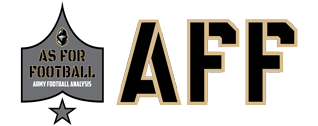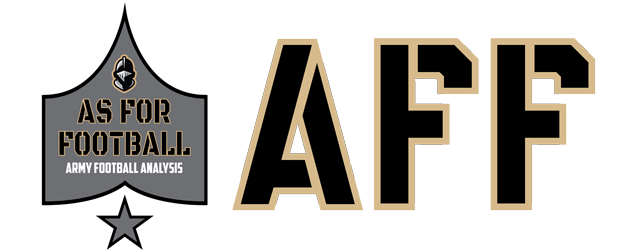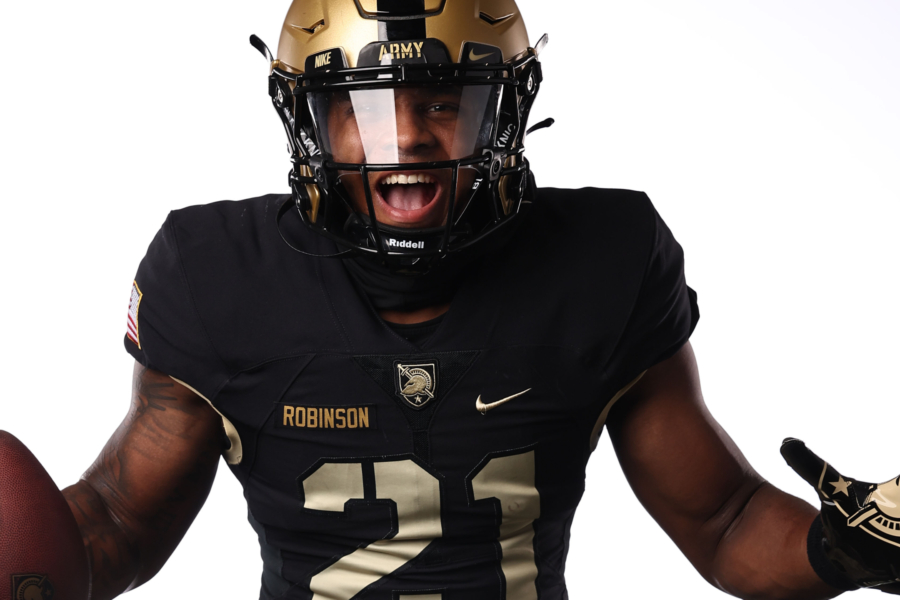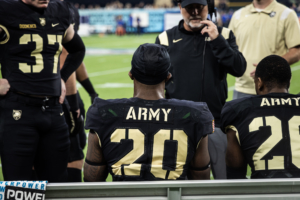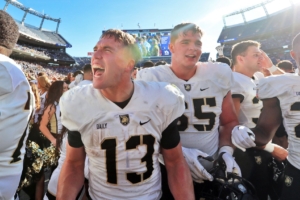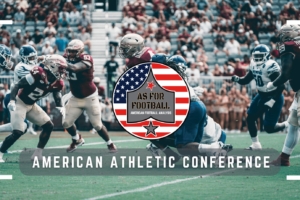It’s hard to imagine Army’s offense running anything except the Flexbone Triple-Option. It seems much longer than a mere 14 years since Army tried running a pass-oriented offense. But from 2000-2008, that’s exactly what they did. During that period, the newly branded “Black Knights” combined for a record of 20-85 with no bowl appearances. Then, in 2009, Army moved back to the Triple Option and by 2010, they had their first bowl win in some 25 years.
Despite this history, the team is yet again departing from their traditional offense. During the 2023 offseason, the Black Knights announced the hiring of Drew Thatcher as Co-Offensive Coordinator, bringing his shotgun offense to the banks of the Hudson. Thatcher played for air raid architect Hal Mumme at New Mexico State before becoming an offensive coach-turned-offensive coordinator at the New Mexico Military Institute and then Nebraska-Kearney.
So we have an air raid student running a shotgun offense at a program whose worst years have come while trying to pass the ball.
What could go wrong?
Fortunately, this writer is happy about the changes coming to the Black Knights offense. Let’s get into it!
What a great weekend for @ArmyWP_Football!!! The BROTHERHOOD is on 🔥🔥🔥 right now!!! Don’t get left out waiting!!!! Commit to being the best possible version of yourself!!! #LastoftheHard #GOARMY #BEATnavy pic.twitter.com/QaPC0FvqVC
— Drew Thatcher (@thatchercoach) July 30, 2023
It’s Still the Triple Option
When Army departed the Triple Option in 2000, the quarterback actually stayed under center. But after the snap, he was far more likely to throw the ball than he is now. The Black Knights quickly learned that with an undersized offensive line, pass protection is hard.
In Thatcher’s offense, the quarterback lines up 5 yards behind the ball. But it’s still a triple option scheme. According to Thatcher, that’s because there’s still “a (dive) read guy and a pitch read guy.” The offense’s look will change, but its fundamentals will stay the same.
We’ll get more into the specifics of the new offense in a later article. For now, let’s focus on why Army Head Coach Jeff Monken headed in this direction.
Why the Change?
In the last few years, the NCAA has instituted several limits on blocking below the waist. Instead of a history lesson, here are the current rules (from the NCAA rulebook):
“A block below the waist is defined as: a block in which the force of the initial contact is below the waist of an opponent who has one or both feet on the ground. When in question, the contact is below the waist. A blocker who makes contact above the waist and then slides below the waist has not blocked below the waist. If the blocker first contacts the opposing player’s hands at the waist or above, it is a legal ‘above the waist’ block.”
A block below the waist is limited in the following ways (diagram below):
(Orange Box) Linemen with initial position completely inside the tackle box may legally block below the waist inside the tackle box on their initial line charge. A block initiated 1-yard beyond the neutral zone is considered within the tackle box. After the initial line charge, these linemen may block below the waist within the tackle box until the ball leaves the tackle box only if the force of the initial contact is directed from the front.
(Yellow Box) Stationary Backs lined up with any part of their body inside the tackle box may block below the waist within the tackle box until the ball leaves the tackle box only if the force of the initial contact is directed from the front. “Directed from the front” is defined as within the clock face region between “10 o’clock and 2 o’clock” forward of the area of concentration of the player being blocked.
All other players are not allowed to block below the waist.
Friends, these rules pose at least two threats to the Flexbone Triple-Option.
Threat #1: The Secondary
Certain second level defenders will start to bolt towards the outside once they know which way the play is going, and that it’s going to the perimeter. The lead halfback — the one blocking, not the one receiving the pitch — is responsible for picking up a block on those guys.
Here’s an example against Air Force from 2018:
In the first picture, Army #5 (Kell Walker, in the yellow circle) is responsible for picking up a block as the play is going to the far-side of the field.
The second picture is from about one second after the snap. We see the far-side safety and linebacker (red squares) bolting for the perimeter.
The play picks up the first down in large part because of Walker’s block. Here’s the initiation of that block:
By today’s rules, that’s a 15 yard penalty, and Army’s 12:55 opening touchdown drive likely would’ve been halted with a 3rd and 20.
Now you might ask, “Why does it matter? Just have Walker block above the waist.” Friends, he’s a 195 lbs slotback, and the guy he’s blocking is a 235 lbs linebacker. That’s why it matters.
Threat #2: Penalties
There is a risk of blocking below the waist penalties from the offensive linemen. Something as simple as a lineman tripping and rolling into a linebacker can turn into a 15 yard penalty and quickly end a drive.
Here’s an example from the UTSA game in 2022:
In the first picture, you’ll see Army in their standard flexbone set in a 2nd and 7. This is well on schedule for a Triple-Option offense.
On initial movement, we see the play heading to the right. We also see that the linemen engage defenders within the first yard after the line of scrimmage (orange box), so it doesn’t matter whether they initiate the block above or below the waist.
Below we see the center start to trip as he leaves the orange box zone:
And here we see that same center roll into a linebacker’s legs incurring a 15-yard penalty, killing the drive:
As a result, linemen concern themselves with a lot more than just their assignments and forward movement. This makes them less effective at doing those two very important things. This in turn results in the Fullback Dive, a mainstay of Army’s offense, becoming significantly less effective.
Granted, the Black Knights still got to the perimeter occasionally last year, resulting in explosive plays. But that’s hard to maintain. Recall Army’s struggles with offensive consistency in 2022. The Black Knights wound up with an inconsistent but sometimes explosive offense that didn’t necesssarily maintain possession successfully for long drive. This created less tired opposing defenses and allowed opposing offenses to stay warm throughout the game.
That was a serious problem in 2022, especially in the game referenced above, versus UTSA.
By comparison, the Gun Option prioritizes the outside. The 5-yard shotgun snap allows for extra time and a better angle, which in turn should help the quarterback make better reads. Plays to the perimeter may not be as explosive as they were with the Flexbone, but we should see fewer negative plays and much more consistency overall. At the end of the day, Army thrives on consistency.
Show belief in someone.
— Matt Drinkall (@DrinkallCoach) July 31, 2023
It might change their life.
See the good in others.
Haven’t We Tried This?
It’s true that we’ve seen plenty of the Gun Option in recent years, especially in Commander-in-Chief’s games. But there are a few things that are different about running it full time:
The Snap
We all witnessed what happened during the 2022 Army-Navy game. Two botched snaps took Army out of sure-fire field goal range, almost ended in a turnover, and gave Army a 4th-and-35 in minus territory. These kinds of things are much more likely to happen when the team retools its offense in the two weeks prior to a CiC game. When the team operates in the shotgun as their normal offense, however, we can expect this to happen much less often.
This is the same reason why shotgun teams increasingly run a shotgun play on 3rd- or 4th-and-inches. They don’t want to botch an under-center snap.
The Read
The way the quarterback reads the defensive linemen changes from an under-center snap. The quarterback is now in a position where he gets to face the linemen and has an extra split second to make the read. This is different than preparing a quarterback room all offseason for reading from under center only to switch it up late in the year. It’s hard to relearn how to read in just two weeks. With an entire offseason, however, this can actually become an advantage.
The Outside
In recent years, when service academy teams have run a Gun Option, it’s been a steady diet of Quarterback Dives and Draws with a few Fullback Dives mixed in. We’ve also seen some obligatory passing with limited success. But overall, it’s not really an offensive scheme; it’s more like a gamble.
The gamble is that if the game is close in the 4th quarter, Army can take a risk and win. So instead of running their normal offense — which may increase the chance of a turnover off a botched pitch, for example — they effectively play scared for three quarters, so that they have a chance to win in the 4th. This is probably the right decision from a coaching/metrics standpoint. But having an offense that runs effectively to the outside from the shotgun means that they won’t have to change their game plan just because it’s a rivalry week.
🗣Time to get started! pic.twitter.com/RATOJ7lsvM
— Army Football (@ArmyWP_Football) July 31, 2023
Final Thoughts
At the end of the day, no one should try to convince you that this offense is as schematically sound as the offense you saw in 2018. It might not be. But that beloved 2018 offense just isn’t legal anymore.
We are where we are, and Army has to play the game that they’re in with the rules that they have. Trying to play the game that they want with the rules that they wish they had was never gonna work.
What do you do when your effectiveness has been outlawed?
Army is trying to innovate. The new offense will still utilize discipline and deception. But Coach Monken needed to find something to replace his now outlawed Flexbone blocking scheme. His solution was to rely on something that the traditional Flexbone shouldn’t have to — player skill. As noted above, we’ll get more into that in a future article. For now, let’s be excited that for the first time in a long time, Army seems to be leading the way into a new era of service academy football.
Go Army! Beat ULM!!!
*Cover image via @ArmyWP_Football
